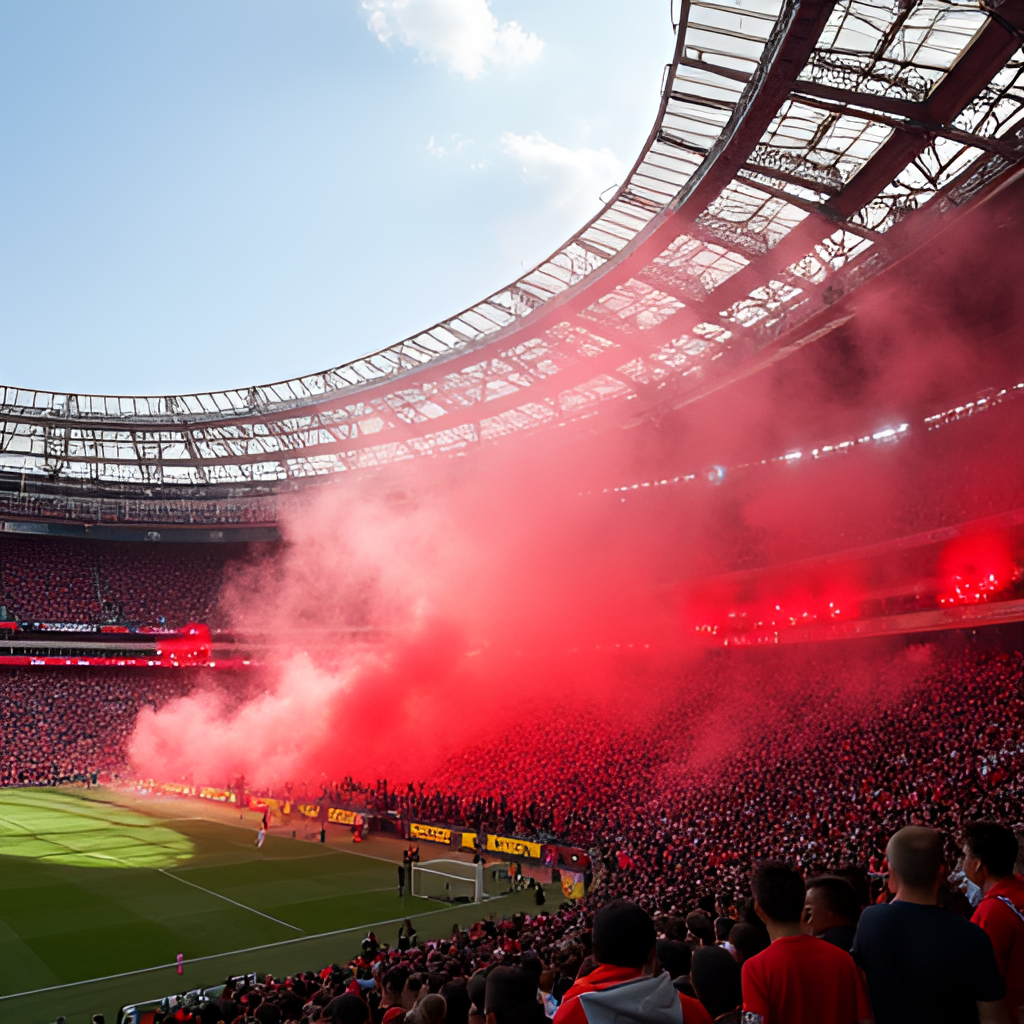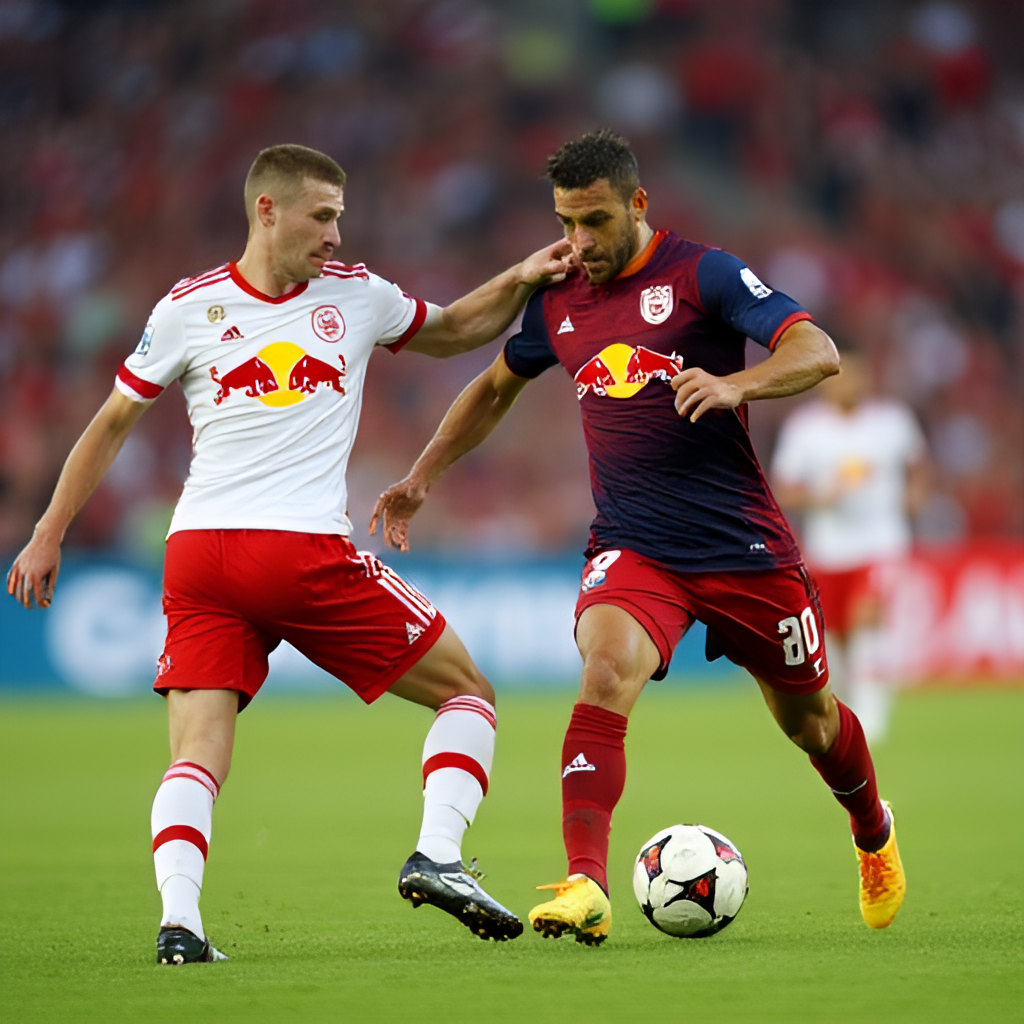Chicago vs NY Red Bulls: A Rivalry Forged in Fire and Fury
- Chicago vs NY Red Bulls: More Than Just a Game
- A Look Back at the Historic Clashes
- Clash of Styles: Fire’s Flair vs. Red Bulls’ Press
- The Heartbeat of the Clubs: Fanbases Compared
- The Players to Watch and What Lies Ahead
- Chicago vs NY Red Bulls: An Enduring MLS Saga
Chicago vs NY Red Bulls is a fixture that consistently delivers excitement, passion, and often, unexpected drama. As someone who’s followed Major League Soccer for years, I’ve always found something special about these matchups – they’re rarely dull affairs. This rivalry isn’t just about two teams battling for three points; it’s a clash of distinct footballing philosophies, passionate fanbases, and a shared history that has shaped the Eastern Conference landscape. Whether you’re a seasoned supporter or new to the beautiful game, understanding the nuances of this enduring rivalry adds a layer of appreciation to every whistle. We’ll delve deep into the history, tactical approaches, and fan culture that define the spirited contests between these two prominent MLS clubs.
A Look Back at the Historic Clashes
The history between Chicago Fire and New York Red Bulls is extensive, marked by numerous encounters that have contributed to their rivalry. Over the years, these two clubs have met 66 times in direct matches. Chicago has historically held an edge, winning 29 games to New York’s 20, with 17 draws. However, recent history tells a slightly different story, with the Red Bulls securing a 2-1 victory in their most recent encounter on April 5, 2025. Looking back to September 14, 2024, the Fire emerged victorious with a 2-1 scoreline at Soldier Field. These results highlight the back-and-forth nature of this contest, where home advantage can often play a significant role. It’s a testament to the unpredictable nature of this showdown; you never quite know what you’re going to get.
There have been many memorable moments in the Chicago Fire vs NY Red Bulls series. From thrilling comebacks to controversial decisions, these games often leave a lasting impression. For instance, in their 34 reported meetings, 71% of matches have seen over 1.5 goals, and 53% have seen over 2.5 goals. This suggests a tendency for high-scoring affairs, something fans of attacking football certainly appreciate. My own experience watching these games confirms this; the tactical setups often lead to open play and plenty of chances. It’s a rivalry that consistently delivers.

This image is a fictional image generated by GlobalTrendHub.
Clash of Styles: Fire’s Flair vs. Red Bulls’ Press
When you break down the tactical approaches of both clubs, a fascinating contrast emerges. The Chicago Fire, particularly in recent seasons, tends to favor a more open and attacking style of play. They often look to attack through the middle, take long shots, and are known for attempting through balls often and taking a lot of shots. In my view, this aggressive offensive posture often leads to exciting, end-to-end football, which can be both rewarding and, at times, leaves them vulnerable at the back. Players like Philip Zinckernagel and Hugo Cuypers are central to this philosophy, with Cuypers leading the Fire in shots on target per match. The Fire’s approach often involves quick counter-pressing after losing possession, aiming to pin opponents in their own half.
The New York Red Bulls, on the other hand, have historically been synonymous with a high-intensity, aggressive pressing game, often referred to as “Red Bull soccer.” This philosophy, deeply rooted in the Red Bull global footballing network, emphasizes winning the ball back quickly in advanced areas and transitioning rapidly into attack. Under various coaches, including Jesse Marsch and more recently Sandro Schwarz, the Red Bulls have employed a fluid 4-2-3-1 or 4-4-2 formation, focusing on closing down passing lanes and occupying key defensive spaces. , , While their core identity remains high pressing, there’s been an evolution, with the Red Bulls showing a greater willingness to maintain possession and push numbers into attack under Schwarz. This blend of aggressive defense and increasingly controlled possession makes them a formidable opponent.
The tactical matchup often boils down to how well the Fire’s attacking flair can break down the Red Bulls’ organized press, and how effectively the Red Bulls can exploit any turnovers in Chicago’s half. It’s a chess match on the pitch, with both teams looking to dictate the tempo and impose their distinct styles. For a neutral fan, this contrast in playing philosophies makes for compelling viewing.
The Heartbeat of the Clubs: Fanbases Compared
The passion of MLS fanbases is truly special, and both Chicago Fire and New York Red Bulls boast dedicated followings that contribute significantly to the matchday atmosphere. Chicago Fire’s fans, notably “Section 8” and “Sector Latino,” are renowned for transforming Soldier Field into a “fortress of support.” Their passionate chants, vibrant displays, and unwavering support are a sight to behold. Having attended Fire matches, I can confirm the energy these groups bring is infectious, making home games a truly immersive experience. Sector Latino, in particular, has promoted Latin fandom since 2005 with Spanish-language chants, songs, and lively tailgates. There’s a strong sense of community, with the club working to engage local fans and community efforts.
The New York Red Bulls’ supporters, particularly the “South Ward” at Red Bull Arena, are equally known for their “relentless energy and unwavering support.” Key groups like the Empire Supporters Club, Viking Army, and Torcida 96 make up the vibrant South Ward, organizing chants, displays, and away trips. , The Empire Supporters Club, one of the oldest in MLS, dates back to 1995, even before the league officially began. The Red Bull Arena itself is often lauded as one of the standout venues in MLS, creating a loud atmosphere even with smaller crowds. It’s clear that both clubs benefit from incredibly passionate fans who show up both at home and on the road, creating an electric atmosphere that defines the MLS experience. This commitment to the club is a huge part of what makes Chicago vs NY Red Bulls such a compelling matchup.

This image is a fictional image generated by GlobalTrendHub.
The Players to Watch and What Lies Ahead
In any competitive league, individual talent often makes the difference, and the Chicago vs NY Red Bulls rivalry has seen its share of standout performers. For the Fire, players like Xherdan Shaqiri have provided moments of brilliance, though his tenure had its ups and downs. More recently, emerging talents from their extensive development system, such as Brian Gutiérrez and goalkeeper Chris Brady, are making waves. The Fire’s academy system is one of the largest in MLS, with a massive youth soccer program. This focus on homegrown talent suggests a promising future for the club.
On the Red Bulls’ side, players like Lewis Morgan have been instrumental in their dynamic play. With a focus on high intensity and aggressive play against the ball, their system relies on collective effort, but individual brilliance certainly shines through. Recent additions, such as Swedish midfielder Gustav Berggren, are expected to add steel and quality to their midfield. The Red Bulls also boast one of the best academies in MLS, consistently producing talent. Both teams are actively making moves in the transfer market to bolster their rosters and secure playoff spots, indicating a strong desire to compete at the highest level. The ongoing development of talent, both acquired and homegrown, will undoubtedly shape the next chapters of this compelling rivalry.
Chicago vs NY Red Bulls: An Enduring MLS Saga
The rivalry between Chicago Fire and New York Red Bulls is a microcosm of what makes Major League Soccer so captivating. It’s a blend of historical clashes, contrasting tactical approaches, and the unwavering passion of their respective fanbases. My personal take is that while the Red Bulls often bring a disciplined, high-pressing game, the Fire’s attacking ambition often creates unpredictable and thrilling encounters. These games are more than just a battle for points; they’re a demonstration of the evolving landscape of North American soccer, marked by strategic depth and growing fan engagement. As the league continues to expand and develop, I anticipate that Chicago vs NY Red Bulls will remain a marquee fixture, always delivering on its promise of competitive and entertaining football. It’s a rivalry that continues to write new, exciting chapters with every whistle.